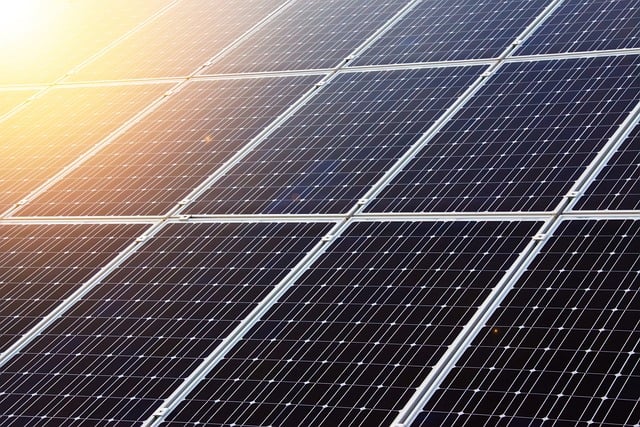Bright Ideas: The Future of Solar Panels Unveiled
In an era where sustainability is not just a trend but a necessity, solar energy has emerged as one of the most promising alternatives to fossil fuels. With advancements in technology, the future of solar panels is brighter than ever, unveiling innovative methods for capturing and converting sunlight into usable energy. This article explores the landscape of solar technology today and projects into the future, where solar panels may become even more efficient, affordable, and integrated into our daily lives.
The Evolution of Solar Technology
To understand the future of solar panels, it’s essential to reflect on their evolution. The first practical solar cell was developed in 1954 by Bell Labs, and it had an efficiency rate of just 6%. Over the decades, various technologies emerged, significantly improving efficiency and reducing costs.
Today, the most common type of solar panel is based on silicon photovoltaic (PV) technology. These panels are favored for their efficiency and reliability. However, the solar industry has made significant strides in research and development, leading to the emergence of several promising alternatives.
Next-Generation Solar Panel Technologies
As the demand for renewable energy continues to grow, researchers and innovators are focusing on new technologies to enhance solar panel efficiency and performance. Here are some of the most noteworthy advancements:
Bifacial Solar Panels
Bifacial solar panels are designed to capture sunlight from both sides, allowing them to harness reflected light from the ground and surrounding surfaces. This technology can increase energy production by up to 30% compared to traditional monofacial panels. Bifacial panels are particularly effective in environments with high albedo, such as snowy or sandy landscapes.
Perovskite Solar Cells
Perovskite solar cells represent one of the most exciting advancements in solar technology. These cells can be made using inexpensive materials and exhibit high absorption efficiency. They are also lightweight and flexible, leading to potential applications in a variety of surfaces, including building-integrated photovoltaics and portable electronics. While stability and longevity remain challenges, ongoing research aims to enhance the durability of perovskite materials.
Building-Integrated Photovoltaics (BIPV)
Rather than traditional solar panels mounted on rooftops, BIPV technology integrates solar cells directly into building materials, such as windows, facades, and even roofing materials. This design not only generates energy but also maintains aesthetic appeal. As urban environments expand, BIPV could play a pivotal role in minimizing the environmental impact of buildings by allowing them to contribute to their energy needs.
Floating Solar Farms
Floating solar farms take advantage of bodies of water as a site for solar panels, reducing land use while benefitting from the cooling effect of water, which can enhance panel efficiency. This method is gaining traction in regions with limited land availability for solar installations and offers an innovative solution to energy production.
Energy Storage Innovations
The efficiency of solar panels is just one part of the equation. To harness solar energy effectively, robust energy storage systems must be in place. Battery technology plays a crucial role in enabling the use of solar energy even when the sun isn’t shining. Recent advancements in this field include:
Lithium-Ion Batteries
Lithium-ion batteries currently dominate the energy storage market due to their high energy density and declining costs. They allow homeowners and businesses to store excess energy generated during the day for use in the evening or during cloudy weather.
Solid-State Batteries
Emerging solid-state battery technology has the potential to revolutionize energy storage. These batteries replace liquid electrolytes with solid ones, resulting in higher energy densities , improved safety, and longer lifespans. As this technology matures, it could provide a compelling storage option to complement solar energy systems.
Feasibility and Affordability
As with any technology, the feasibility and affordability of solar panels have a significant impact on their adoption. The cost of solar panels has dramatically decreased over the past decade, making them more accessible to homeowners and businesses alike. According to recent reports, solar energy is often the cheapest source of electricity in many parts of the world.
Government incentives and subsidies have played a crucial role in boosting solar adoption. Various countries offer tax credits, rebates, and feed-in tariffs to encourage individuals and companies to invest in solar energy. This support, coupled with decreasing installation costs and the emergence of financing models such as solar leases and power purchase agreements (PPAs), facilitates growth in the solar market.
Environmental and Social Impact
The transition to solar energy has profound implications for the environment and society. Solar energy generation reduces greenhouse gas emissions, contributing to the fight against climate change. Furthermore, solar technology opens doors for job creation in manufacturing, installation, and maintenance, rendering it a vital sector in the green economy.
However, the lifecycle impact of solar panels and their manufacturing processes still need careful consideration. Recycling programs for solar panels at the end of their life cycle are emerging as an important issue, ensuring that materials can be reused and that harmful chemicals are properly managed.
The Future of Solar Adoption
Looking ahead, the future of solar panels appears promising, driven by continuous innovation and the urgent need for sustainable energy solutions. While technical advances are essential, public acceptance and policy framework are equally vital in shaping solar adoption.
As education and awareness about the benefits of solar energy increase, more individuals and businesses may be inclined to invest in these technologies. Furthermore, as the grid continues to modernize, integrating solar power into existing energy systems will become more seamless.
Conclusion
The solar panel industry stands at a crucial juncture, where innovation meets necessity. With advancements like bifacial panels, perovskite cells, and integrated systems, we are just beginning to realize the full potential of solar energy. As we set our sights on a brighter future, the role of solar panels will undoubtedly be significant in the global transition toward renewable energy.
Embracing the bright ideas of today will pave the way for a sustainable tomorrow, ensuring that our reliance on fossil fuels becomes a thing of the past as we fully harness the power of the sun.





